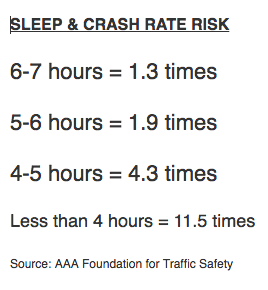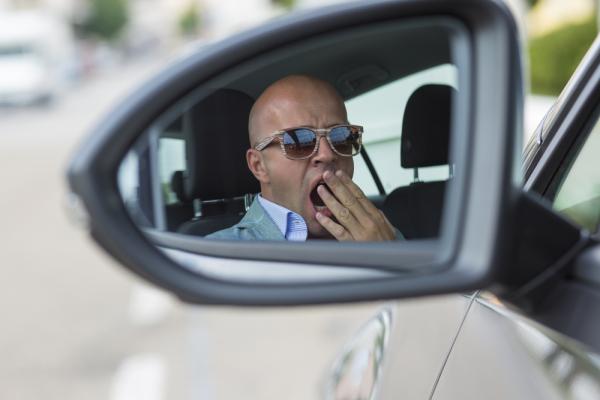With the release of a new report on the dangers of sleep-deprived driving, the AAA Foundation for Traffic Safety should be credited for reiterating an essential tenet: one must be fully aware and alert when getting behind the wheel of a car.
We applaud the non-profit organization for its comprehensive study, which highlighted the degree of driver impairment that occurs depending on the amount of sleep lost in the 24 hours preceding a traffic accident. The AAAFTS then quantified that risk – increasing, logically, with sleep/hours lost – in its report, which then made news nationwide.
 Along with blaring headlines that warned us of the danger, the takeaway was that compared to drivers who got a recommended seven hours of sleep – the baseline figure considered safe for operating a motor vehicle – drivers deprived of up to an hour of sleep in the 24-hour period before an accident had a "crash rate" of 1.3 times (or 30% above) the baseline. Meanwhile, the rate for those deprived of up to two hours of sleep was 1.9 times higher, or nearly twice as much.
Along with blaring headlines that warned us of the danger, the takeaway was that compared to drivers who got a recommended seven hours of sleep – the baseline figure considered safe for operating a motor vehicle – drivers deprived of up to an hour of sleep in the 24-hour period before an accident had a "crash rate" of 1.3 times (or 30% above) the baseline. Meanwhile, the rate for those deprived of up to two hours of sleep was 1.9 times higher, or nearly twice as much.
"Sleep deprivation has been shown to slow reactions to stimuli, decrease the accuracy of responses, and lead to long lapses in attention," the AAAFTS wrote in the report's introduction, "all of which clearly have negative implications for safe driving. A multidisciplinary expert panel convened by the National Sleep Foundation recommended that healthy adults ages 18-64 should sleep for 7-9 hours daily."
However, when one learns about how the sleep data was obtained, uncertainty about its accuracy, as well as the study's corresponding conclusions on crash rates, begins to emerge.
First and foremost, as the study tells us, all of the figures are self-reported by the drivers who were just involved in – or responsible for – a traffic accident:
"As a part of the crash investigation, drivers were asked to report the start and end times of all of their sleep in the 24-hour period that preceded the crash, including any naps that were longer than 30 minutes. ... Drivers also reported their 'normal average daily sleep interval,'" otherwise called their "usual daily amount of sleep."
That said, these crash rates are based on an assumption that the "7,234 drivers involved in 4,571 crashes" reported to police between July 2005 and December 2007 were completely truthful about how much sleep they recently had, as well as "their own usual amount of sleep."
Now human nature, being what it is, would leave us to believe that people, in general, tend to downplay the severity of their faults. That tendency also contributes to mitigating personal responsibility.
Given that the nature of the inquiry – being questioned about an accident they were just party to – is inherently embarrassing, the tendency might reasonably be to say that their error (e.g. not getting enough sleep) wasn't as bad as it was. Therefore, instead of a driver reporting that he slept three fewer hours the night before – which is also a statement that cannot be challenged – a driver seeking to downplay his role might easily say he only lost two hours. And if that's the case, the figures of crash rates for each category in the above chart, would be lower.
Another major incentive for this type of truth-shading would be that drivers involved in an accident instantly become concerned with possible criminal charges, lawsuits and their own financial liability. With these considerations, it's extremely tempting to admit to less wrongdoing, especially when making a such a statement cannot be verified or contradicted.
Without a doubt, the message sent by AAA is wholeheartedly worthwhile. Driving while drowsy is terribly dangerous, and all drivers need to be reminded to get a proper amount of sleep and not to take chances on the road. However, self-reported data is usually suspect to begin with. But when it's intertwined with an individual's personal fault and potential liability, it's even more so.




